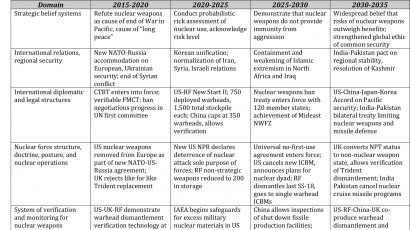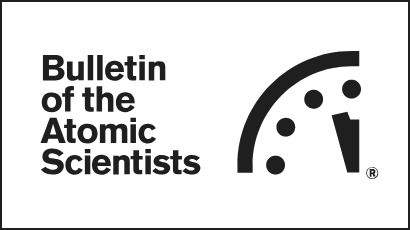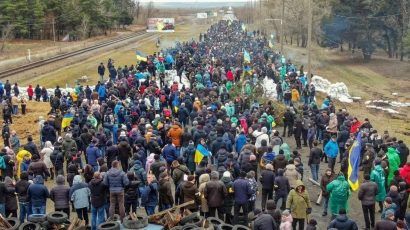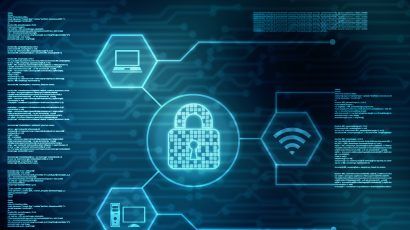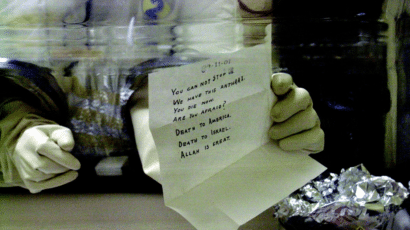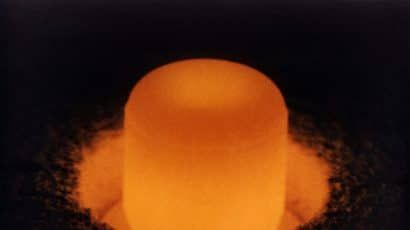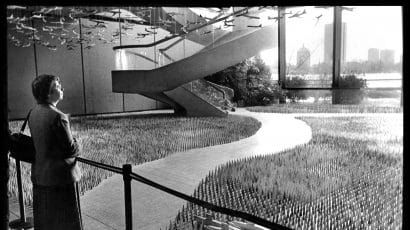Search results for nuclear terrorism
With the nuclear-weapon states and their allies headed away from the increased security a world without nuclear weapons would bring, it is time for the world’s citizens and non-governmental organizations to play a leading role in creating the architecture of our future security environment. We must act now to create a multilateral plan for verifiable nuclear disarmament by the year 2045, 100 years after the first use of nuclear weapons.
In Saudi Arabia, nuclear energy for nuclear energy’s sake
Saudi Arabia doesn’t lack the capability to develop a nuclear arsenal; it lacks the interest.
Could less be more?
The outcome of the 2012 Nuclear Security Summit left a lot to be desired, and much remains to be done to minimize the nuclear and radiological terrorism risk.
Radiological materials and the Nuclear Security Summit
With the second Nuclear Security Summit fast approaching, it is a good moment to reflect on one of the new issues with which the Seoul summit will attempt to grapple: radiological security. The first Nuclear Security Summit in Washington focused on weapons-usable nuclear materials -- highly enriched uranium and plutonium. The rationale behind a strictly defined agenda was to attract attention to the materials that pose the gravest dangers, as they can be used in a nuclear weapon.
Promoting nuclear security in the Middle East
Initiatives led by experts from the nuclear power industry and academia, rather than state leaders, can help secure nuclear facilities and material in the Middle East—especially Iran and Turkey.
Reduce the civilian use of HEU now
Highly enriched uranium (HEU) is usually regarded as the fissile material most desirable to terrorists, given the relative ease with which it could be used to manufacture a simple nuclear explosive device. For similar reasons, it's also worrisome from a state-level proliferation viewpoint.
Russian military surrounds Europe’s largest nuclear power plant as Ukrainians block access roads
Nuclear power plants weren't built to sustain the kind of damage that wars can inflict on people and infrastructure.
Cyber security at nuclear facilities: US-Russian joint support needed
The current political climate makes it difficult for the United States and Russia to cooperate on cyber security, but they can start by supporting other nations that have civilian nuclear facilities.
Who will succeed ElBaradei?
As International Atomic Energy Agency (IAEA) Director-General Mohamed ElBaradei prepares to step down at the end of November, the task of finding his replacement is heating up. Two candidates, Yukiya Amano of Japan and Abdul Samad Minty of South Africa, both IAEA ambassadors from their respective countries, failed to garner the necessary two-thirds majority in successive rounds of secret balloting by the IAEA's 35-member Board of Governors in March.
The ban treaty must address the scientifically predicted consequences of nuclear war
To date, there has been an unfortunate avoidance (among both diplomats and NGOs) of any explicit discussion of the effects of nuclear war; instead the language of the general conversation has tended to focus on the effects of a nuclear weapon, in the singular.
The Biden administration overestimates radiological terrorism risks and underplays biothreats
President Joe Biden announced a new effort to thwart acts of terrorism that use weapons of mass destruction. In one respect, it is focused on the wrong risk.
Resolving safety and security concerns about nuclear power
Whether safety and security questions will prevent a significant expansion of global nuclear power in the future—and a corresponding reduction in climate-altering pollution—depends largely on how governments and the nuclear industry respond. To confront these challenges, countries should change the way nuclear reactors are constructed and operated—continuing some already-begun modifications and improvements to existing reactors in the short term, and switching to new, improved designs in the longer term.
The future of nuclear security
What the next Nuclear Security Summit must accomplish.
The history of nuclear power’s imagined future: Plutonium’s journey from asset to waste
Separated civil plutonium should be formally regarded as a waste, not a fuel that has value. It is time for governments and industries to acknowledge–everywhere–that civil reprocessing, plutonium’s provider, is a waste-generating and complicating technology, a source of dangers and burdens rather than putative benefits. Much better solutions to spent fuel management and energy production now exist. Long unwanted as fuel by utilities, immense stocks of plutonium have accumulated in France, Japan, Russia and the UK from reprocessing programs launched in the 1970s. Politically embedded, they continued long after the “plutonium economy” and its fast breeder reactors had lost credibility. China, a recent advocate, should beware of the costs of going down this road and of stoking insecurities in Asia and beyond if connections to weapon programs are feared. Drawing upon a recent book by Frank von Hippel, Masafumi Takubo, and Jungmin Kang, this essay provides a fresh perspective on plutonium and reprocessing’s troubled international histories, including histories of imagined futures that have so heavily influenced their politics and economics.
Libya, Belarus, and dealing with dictators
Dealing with thuggish dictators reluctant to relinquish their stockpiles of highly enriched uranium (HEU) is a necessary component in the global effort to secure vulnerable fissile materials by 2013. Unfortunately, nuclear deals are often tentative and prone to collapse if a dictator's whims change. The successful nuclear deal with Libya and the stalled deal with Belarus are indicative of this dynamic, but it should not stop the United States and other nations from seeking deals to secure fissile materials that might otherwise be exploited by would-be nuclear terrorists.
Nuclear security: Continuous improvement or dangerous decline?
Recommendations for getting nuclear security on the path of continuous improvement and thereby preventing terrorists from acquiring a nuclear weapon
Doomsday Clock remains at five minutes to midnight
The politics of economic recovery have distracted world leaders from the long-term threats that face humanity, specifically the dangers presented by climate change and nuclear weapons, observed the Science and Security Board of the Bulletin of the Atomic Scientists, as it announced today that the minute hand of its Doomsday Clock will remain at five minutes to midnight. "2012 was a year in which global problems pressed forward, but too many of its citizens stood back."
Preventing a nuclear terrorist version of Fukushima
In a rare accord reached on March 25, the European Union decided to conduct safety "stress tests" on all of its 143 nuclear reactors. Akin to earlier stress tests that evaluated whether major banks were robust enough to withstand adverse economic conditions in the aftermath of the global financial collapse, the nuclear safety stress tests will assess the ability of reactors to withstand events such as those that devastated Fukushima.
Preventing a nuclear terrorist version of Fukushima
The nuclear safety "stress tests" planned for Europe should be expanded to include tests that evaluate the security of nuclear materials around the world.
Will Canada remain a credible nonproliferation partner?
The recent effort to persuade Canada to sign the Treaty on the Prohibition of Nuclear Weapons has stimulated a lively debate in the public sphere. At the same time, out of the spotlight, the start-up company Moltex Energy received a federal grant to develop a nuclear project in New Brunswick that experts say will undermine Canada’s credibility as a nonproliferation partner.
